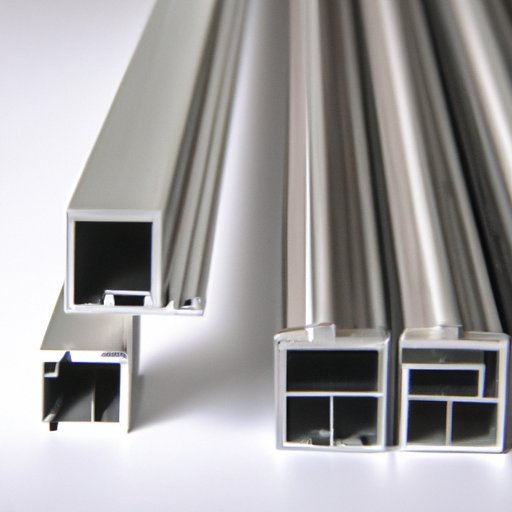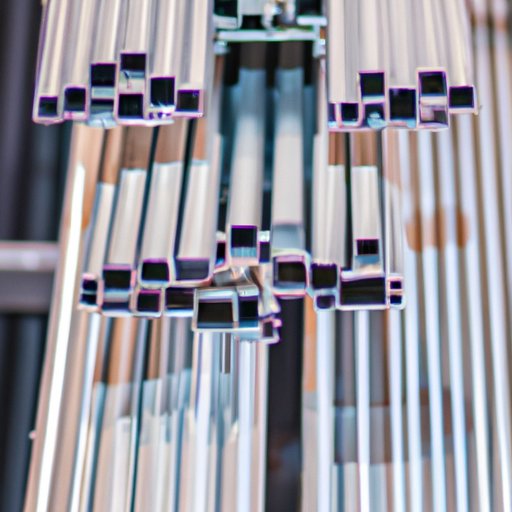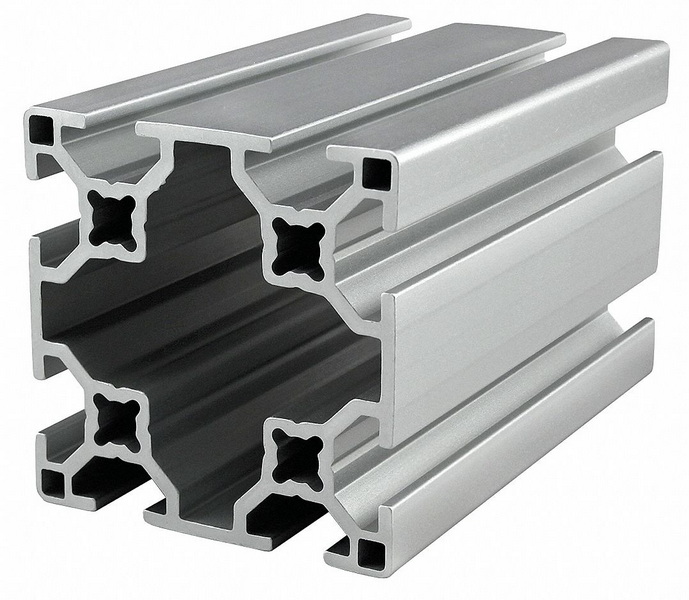Content Menu
● Understanding Aluminum Extrusion
>> Benefits of Aluminum Extrusion
● Joining Techniques for Aluminum Extrusions
>> Mechanical Fastening
>> Welding
>> Adhesive Bonding
>> Interlocking Joints
>> Riveting
● Factors Affecting Structural Integrity
>> Material Properties
>> Joint Design
>> Environmental Conditions
>> Load Conditions
● Best Practices for Ensuring Structural Integrity
● Conclusion
● Frequently Asked Questions
>> 1. What is the best joining method for aluminum extrusions?
>> 2. Can aluminum extrusions be welded?
>> 3. How does adhesive bonding compare to mechanical fastening?
>> 4. What factors should be considered when designing joints for aluminum extrusions?
>> 5. How can I ensure the longevity of aluminum extrusion joints?
Understanding Aluminum Extrusion
Before delving into joining techniques, it is essential to understand what aluminum extrusion is. The process involves forcing heated aluminum alloy through a die to create a specific cross-sectional profile. This method allows for the production of long lengths of material with consistent dimensions and properties. The resulting extrusions can be cut, machined, or assembled into various structures.

Benefits of Aluminum Extrusion
Aluminum extrusions offer numerous advantages, including:
- Lightweight: Aluminum is significantly lighter than steel, making it ideal for applications where weight reduction is crucial.
- Corrosion Resistance: Aluminum naturally forms a protective oxide layer, enhancing its durability in various environments.
- Versatility: The extrusion process can create a wide range of shapes, allowing for innovative designs.
- Cost-Effectiveness: Aluminum extrusions can be produced in large quantities, reducing manufacturing costs.
Joining Techniques for Aluminum Extrusions
The structural integrity of aluminum extrusions is largely determined by the joining techniques used to connect different components. Here are some of the most common methods:
Mechanical Fastening
Mechanical fastening involves using bolts, screws, or rivets to join aluminum extrusions. This method is straightforward and allows for easy disassembly, making it suitable for applications where maintenance or modifications may be required.
Impact on Structural Integrity: Mechanical fasteners can provide strong connections, but their effectiveness depends on proper installation and the quality of the fasteners used. Over time, vibrations and loads can lead to loosening, which may compromise structural integrity. To mitigate this, it is essential to use locking mechanisms or thread-locking adhesives to maintain joint strength.
Welding
Welding is a process that involves melting the base materials and adding a filler material to create a strong bond. Common welding techniques for aluminum include TIG (Tungsten Inert Gas) and MIG (Metal Inert Gas) welding.
Impact on Structural Integrity: Welding can create very strong joints, but it requires skilled labor and proper equipment. The heat generated during welding can alter the properties of the aluminum, potentially leading to warping or weakening of the material if not managed correctly. Additionally, the presence of impurities or improper filler material can lead to defects in the weld, compromising the joint's strength.
Adhesive Bonding
Adhesive bonding involves using specialized adhesives to join aluminum extrusions. This method is increasingly popular due to its ability to distribute stress evenly across the joint.
Impact on Structural Integrity: Adhesive bonding can provide excellent strength and flexibility, but the effectiveness of the bond depends on surface preparation and the type of adhesive used. Proper curing time is also critical to achieving maximum strength. Additionally, adhesive bonds can be sensitive to environmental factors such as temperature and humidity, which can affect their performance over time.
Interlocking Joints
Interlocking joints involve designing the extrusions so that they fit together without additional fasteners. This method can include features like grooves or tabs that lock into place.
Impact on Structural Integrity: Interlocking joints can provide strong connections without the need for additional materials. However, the design must be precise to ensure a tight fit, and any misalignment can weaken the joint. This method is particularly effective in applications where aesthetics are important, as it can create a clean and seamless appearance.
Riveting
Riveting is a method that involves using metal pins (rivets) to join aluminum extrusions. This technique is often used in applications where welding is not feasible.
Impact on Structural Integrity: Riveting can create strong joints, but the quality of the rivet and the installation process are crucial. Improperly installed rivets can lead to joint failure. Additionally, the rivet's material must be compatible with the aluminum to prevent galvanic corrosion, which can weaken the joint over time.

Factors Affecting Structural Integrity
When considering the impact of joining techniques on structural integrity, several factors must be taken into account:
Material Properties
The specific aluminum alloy used can influence the strength and durability of the joints. Different alloys have varying mechanical properties, which can affect how they respond to stress and strain. For example, alloys with higher magnesium content tend to have better weldability, while those with silicon are more suitable for casting.
Joint Design
The design of the joint itself plays a critical role in its strength. Factors such as the surface area of contact, alignment, and load distribution must be carefully considered to ensure optimal performance. A well-designed joint can significantly enhance the overall strength of the assembly, while a poorly designed joint can lead to premature failure.
Environmental Conditions
Aluminum's performance can be affected by environmental factors such as temperature, humidity, and exposure to chemicals. Joints must be designed to withstand the specific conditions they will encounter in their application. For instance, in marine environments, it is crucial to consider corrosion resistance and the potential for galvanic corrosion when selecting joining methods.
Load Conditions
Understanding the types of loads (static, dynamic, or cyclic) that the joint will experience is essential for selecting the appropriate joining technique. Different methods may perform better under specific load conditions. For example, mechanical fasteners may be more suitable for applications with high dynamic loads, while adhesive bonding may excel in applications with static loads.
Best Practices for Ensuring Structural Integrity
To maximize the structural integrity of aluminum extrusions, consider the following best practices:
1. Choose the Right Joining Method: Evaluate the specific requirements of your application and select the joining technique that best meets those needs. Consider factors such as load conditions, environmental exposure, and the need for disassembly.
2. Ensure Proper Surface Preparation: Clean and prepare surfaces before joining to enhance adhesion and reduce the risk of contamination. This may involve removing oxide layers, dirt, and grease to ensure a strong bond.
3. Follow Manufacturer Guidelines: Adhere to the recommendations provided by material and adhesive manufacturers to ensure optimal performance. This includes following curing times, temperature ranges, and application methods.
4. Conduct Regular Inspections: Regularly inspect joints for signs of wear, loosening, or damage to maintain structural integrity over time. Implementing a maintenance schedule can help identify potential issues before they lead to failure.
5. Train Personnel: Ensure that personnel involved in the assembly process are adequately trained in the chosen joining techniques to minimize errors. Providing ongoing training and resources can help maintain high-quality standards.
Conclusion
The joining techniques used in aluminum extrusion play a crucial role in determining the structural integrity of the final product. By understanding the various methods available and their impacts, manufacturers can make informed decisions that enhance the performance and durability of their structures. Whether through mechanical fastening, welding, adhesive bonding, interlocking joints, or riveting, each method has its advantages and considerations. By following best practices and considering the specific requirements of each application, it is possible to achieve strong and reliable connections that stand the test of time.

Frequently Asked Questions
1. What is the best joining method for aluminum extrusions?
The best method depends on the application requirements, including load conditions, environmental factors, and the need for disassembly. For example, welding may be ideal for permanent structures, while mechanical fastening is better for applications requiring maintenance.
2. Can aluminum extrusions be welded?
Yes, aluminum extrusions can be welded using techniques such as TIG and MIG welding, but it requires skilled labor to ensure quality. Proper training and equipment are essential to achieve strong welds without compromising the material's properties.
3. How does adhesive bonding compare to mechanical fastening?
Adhesive bonding can provide a more uniform stress distribution, while mechanical fastening allows for easier disassembly. Adhesives can also reduce the weight of the assembly by eliminating the need for additional fasteners.
4. What factors should be considered when designing joints for aluminum extrusions?
Consider material properties, joint design, environmental conditions, and load conditions to ensure optimal performance. Each factor can significantly influence the strength and durability of the joint.
5. How can I ensure the longevity of aluminum extrusion joints?
Regular inspections, proper surface preparation, and adherence to manufacturer guidelines can help maintain joint integrity over time. Implementing a proactive maintenance strategy can prevent issues before they arise.






















